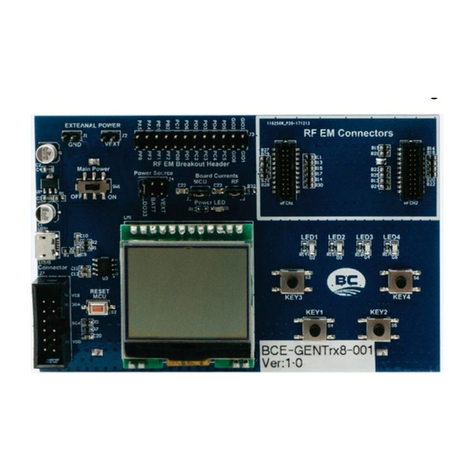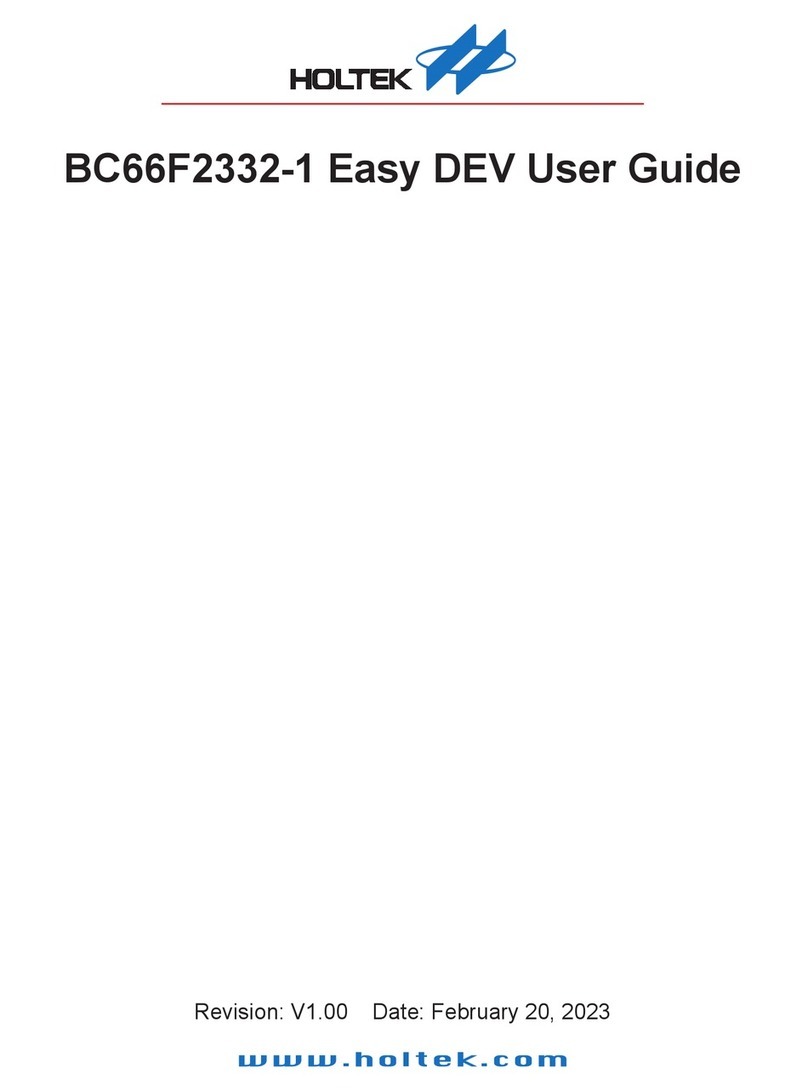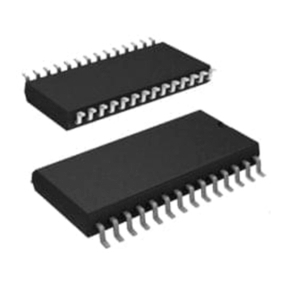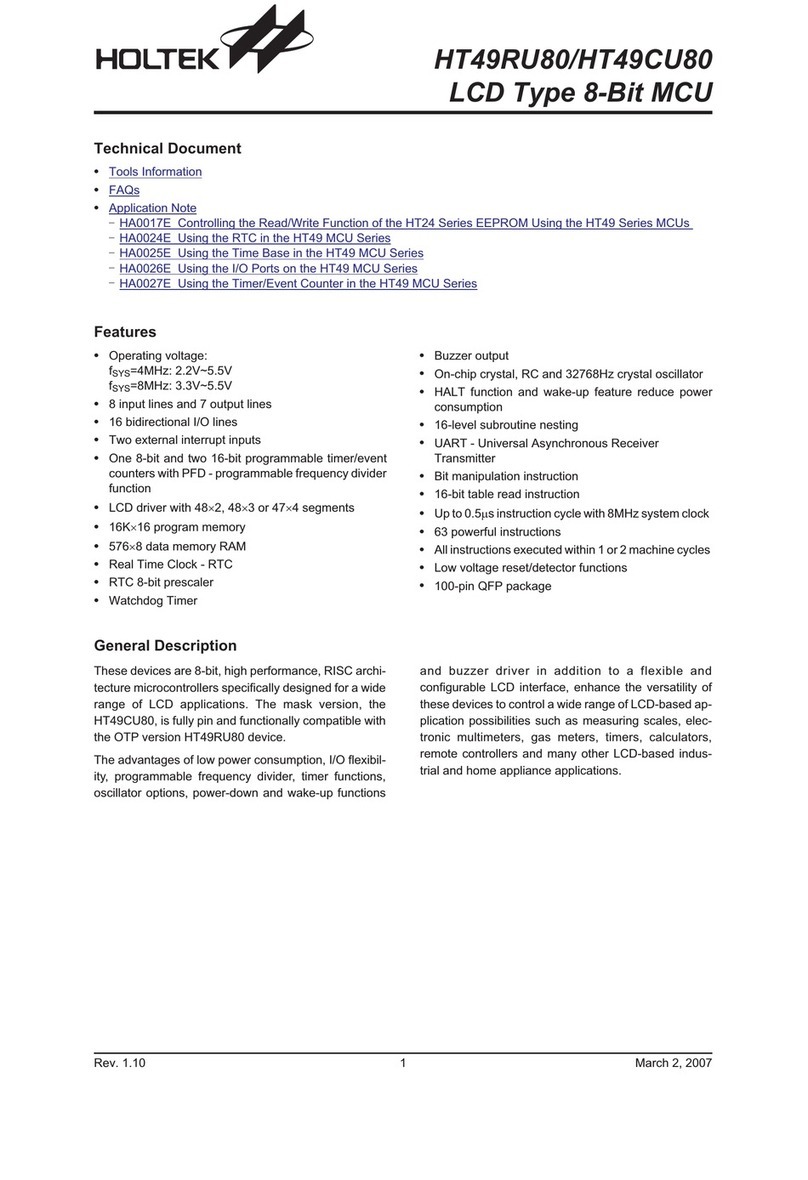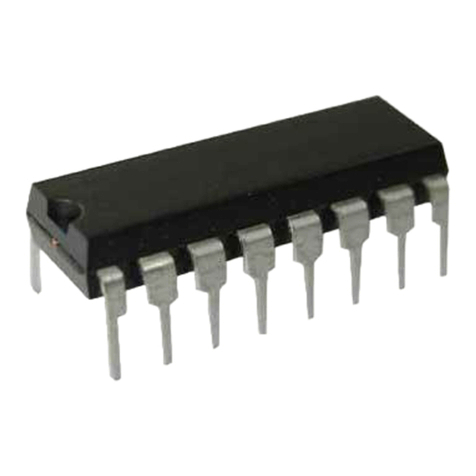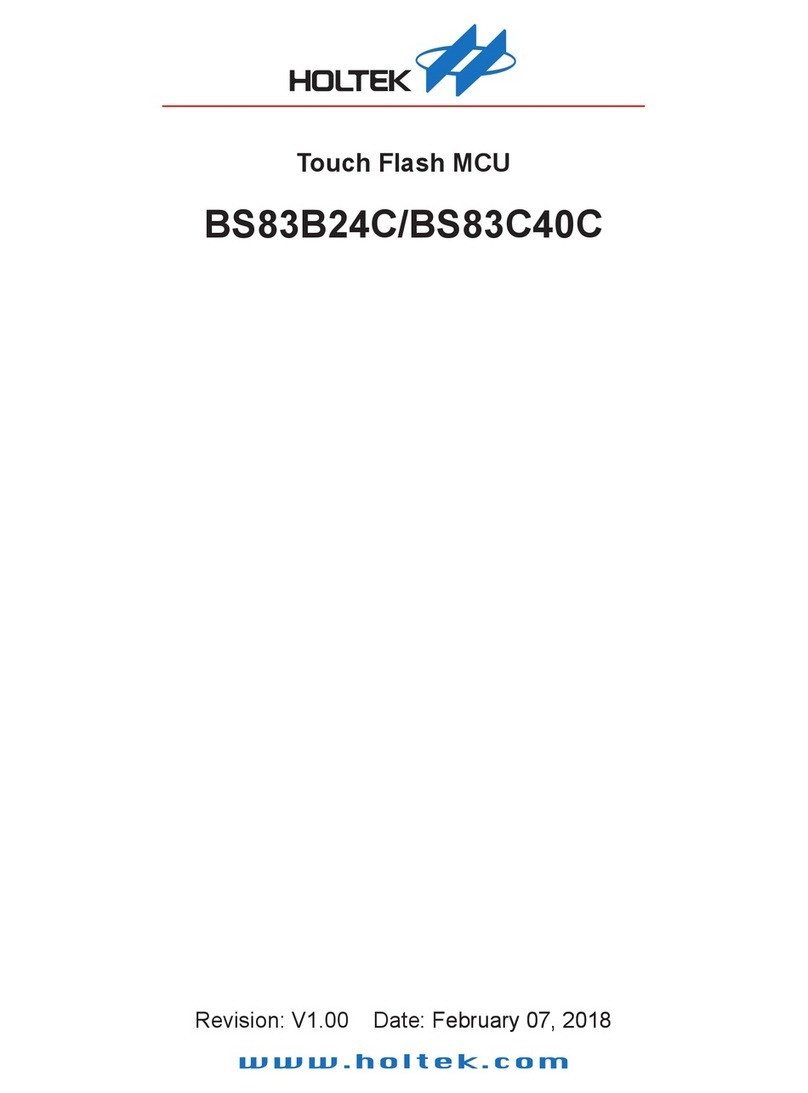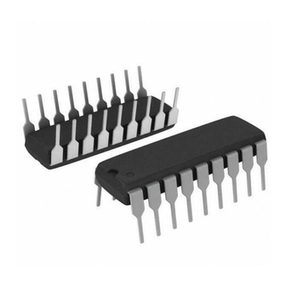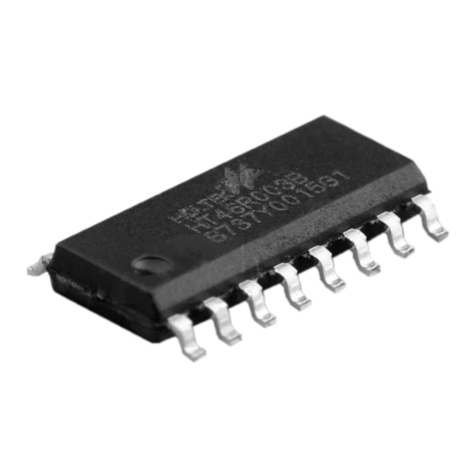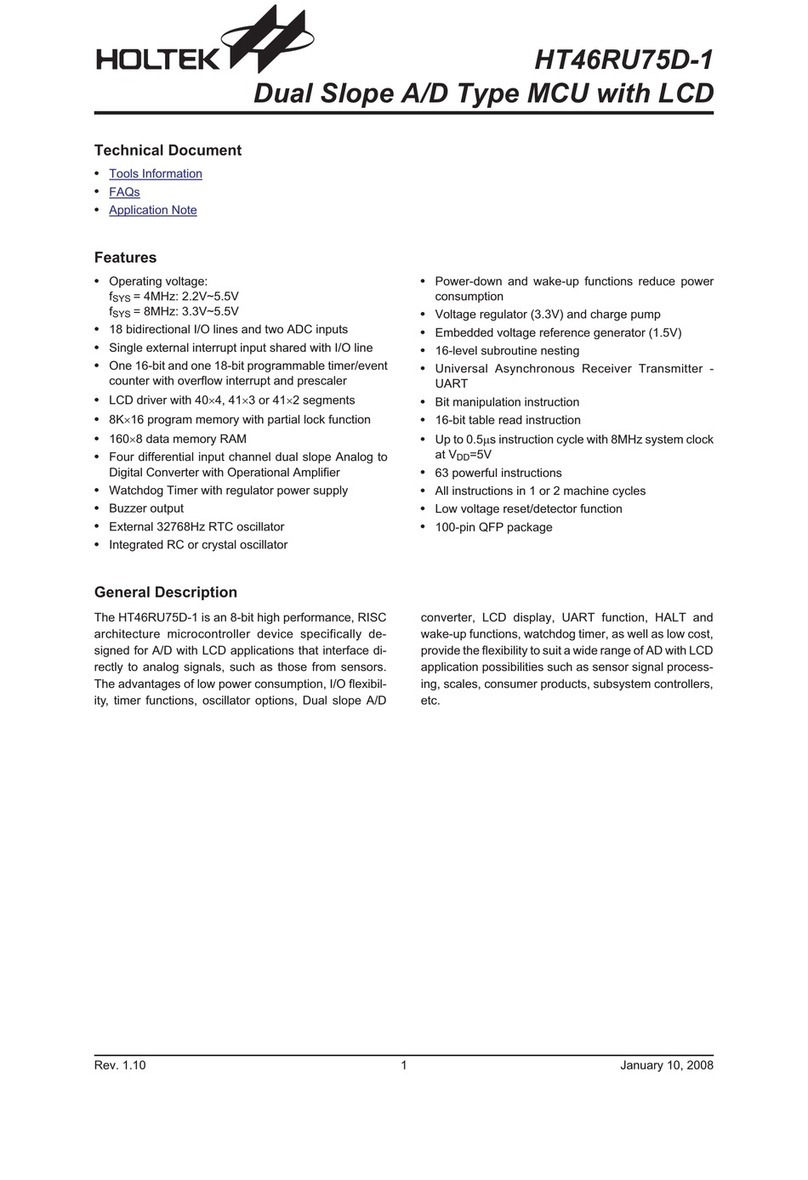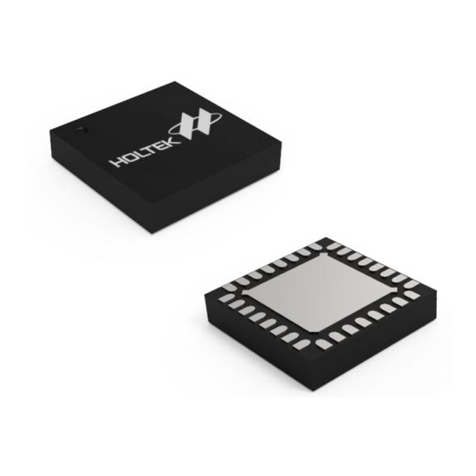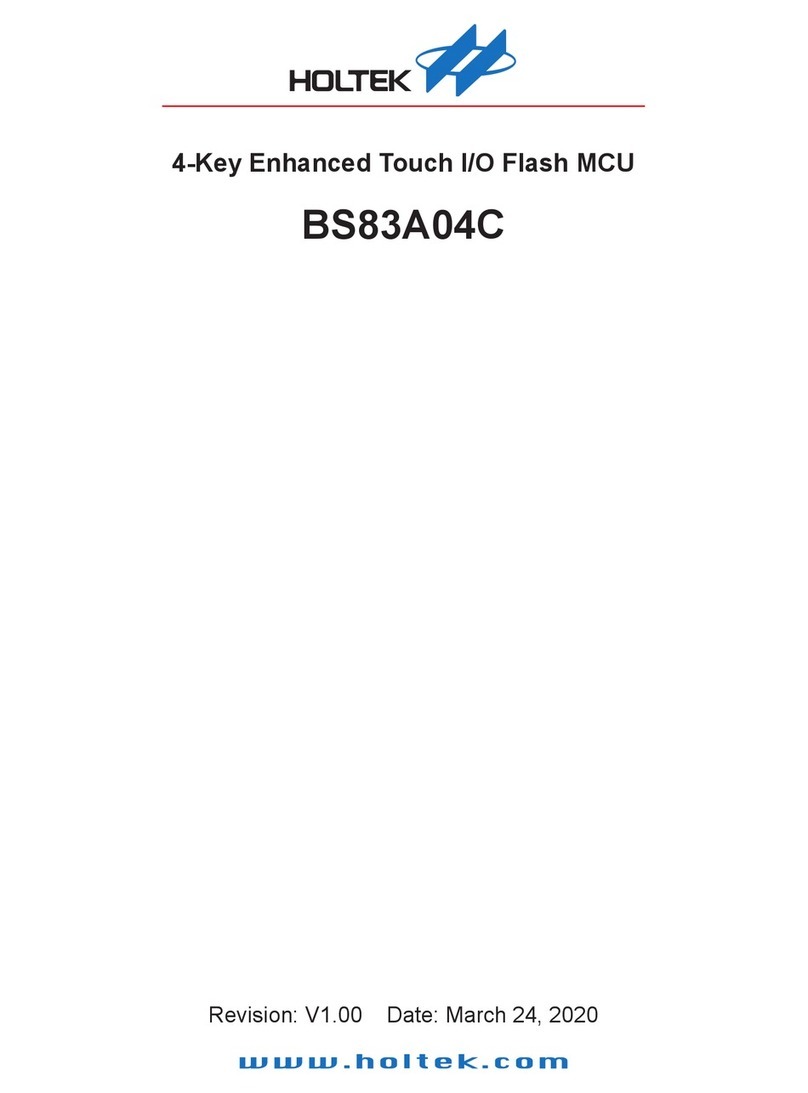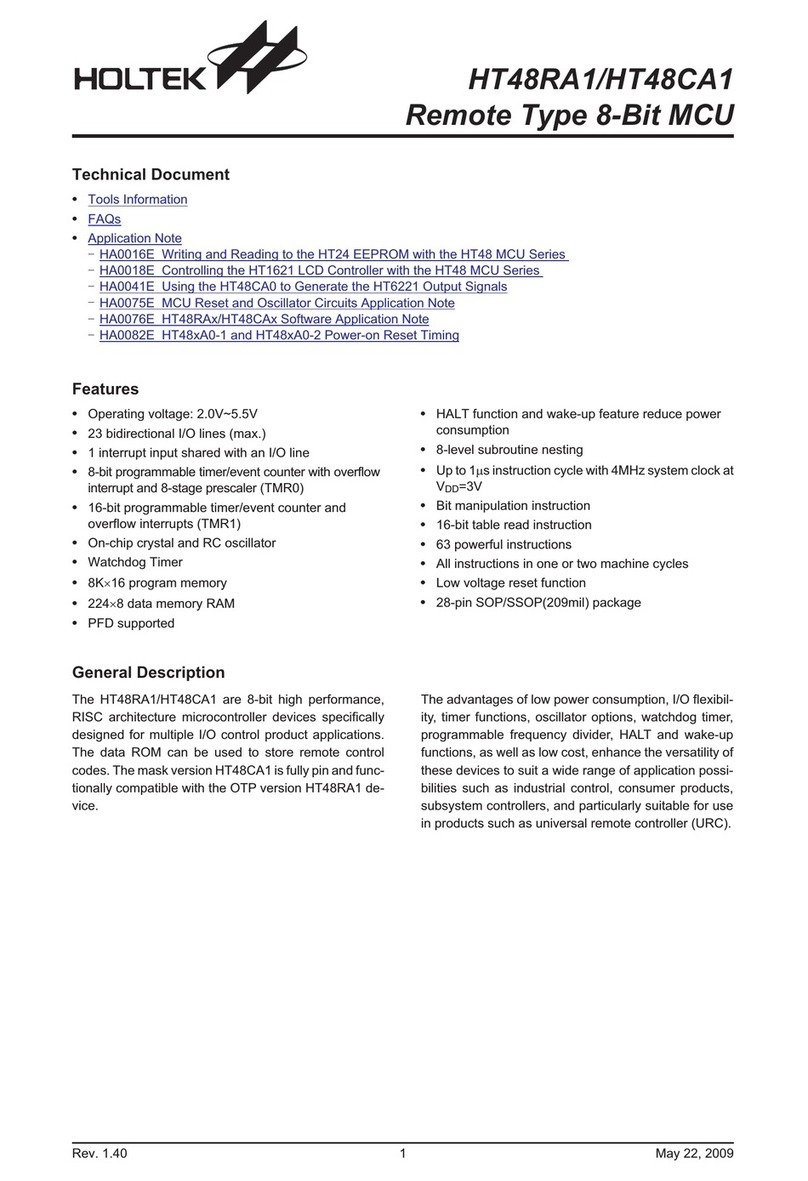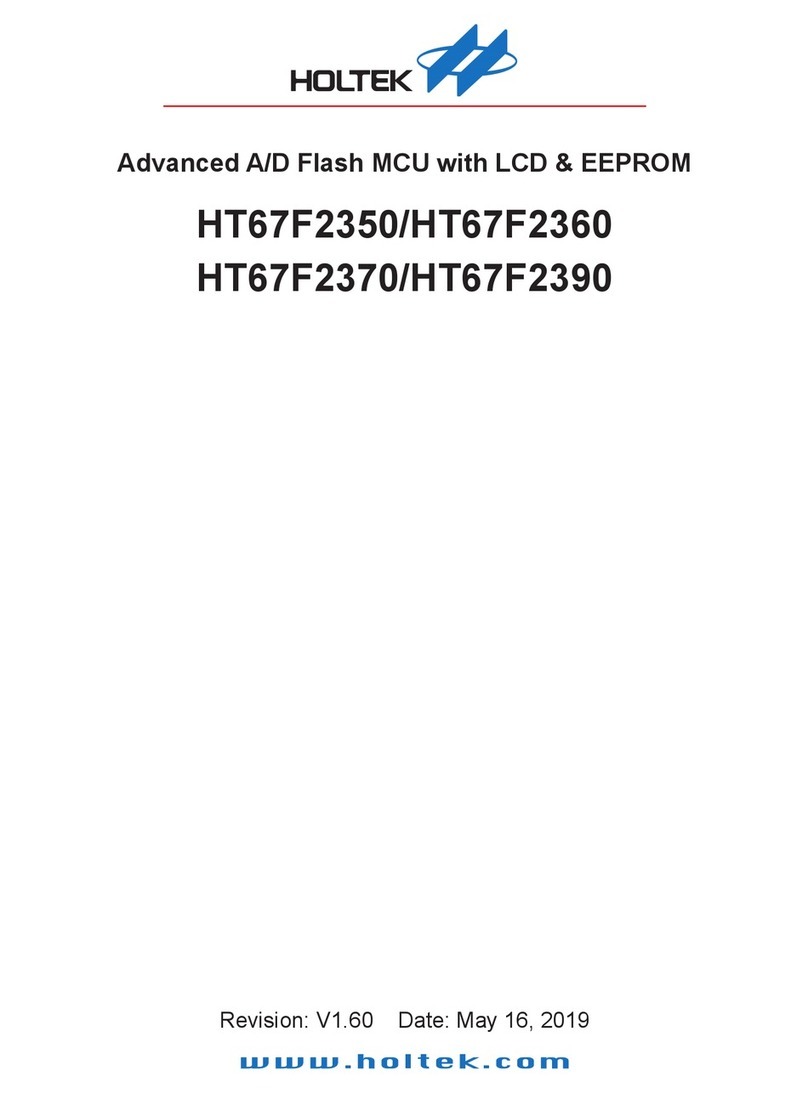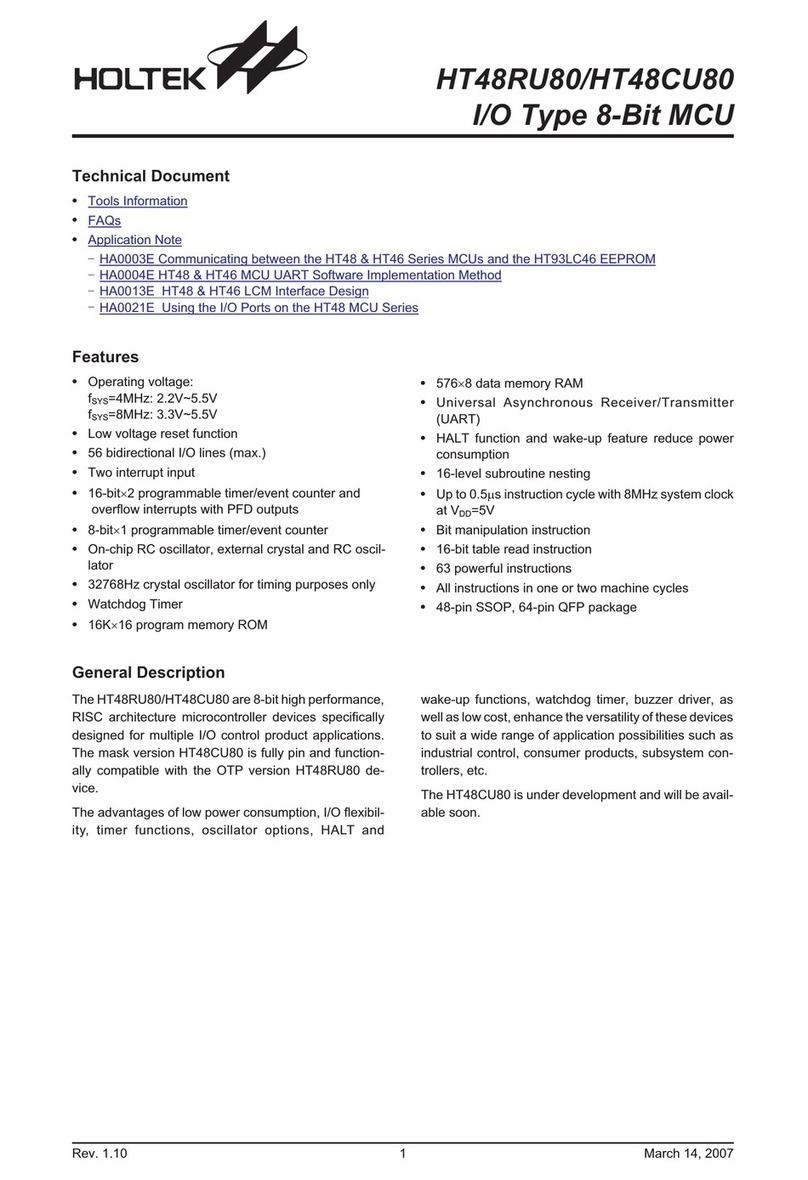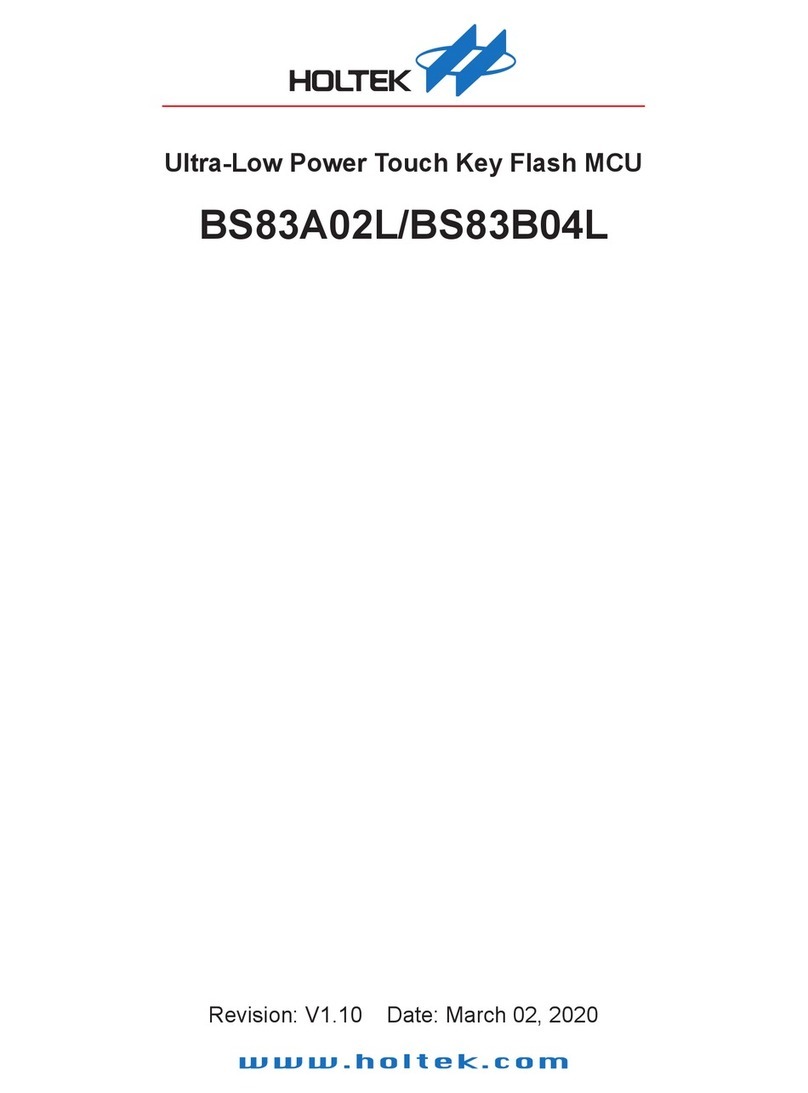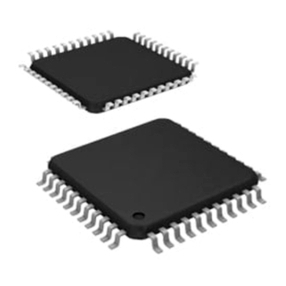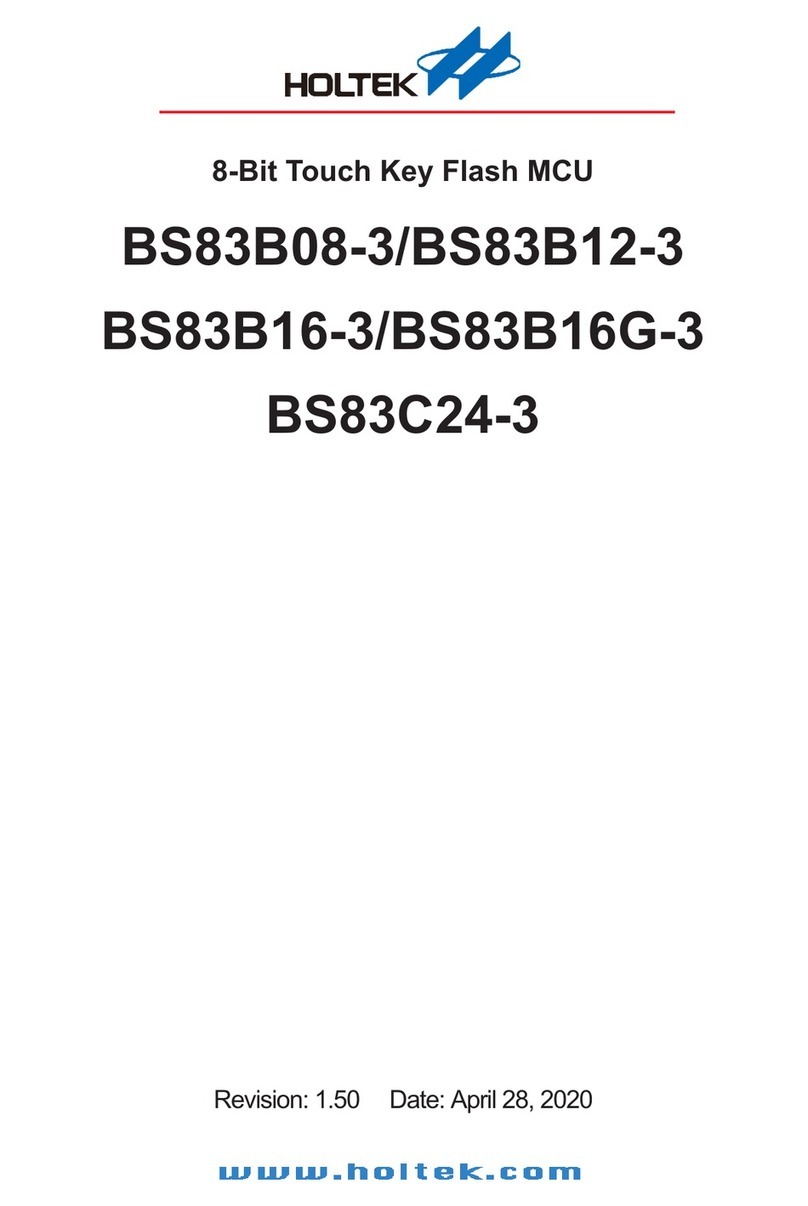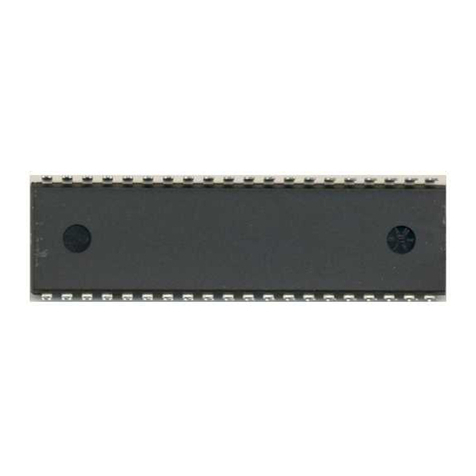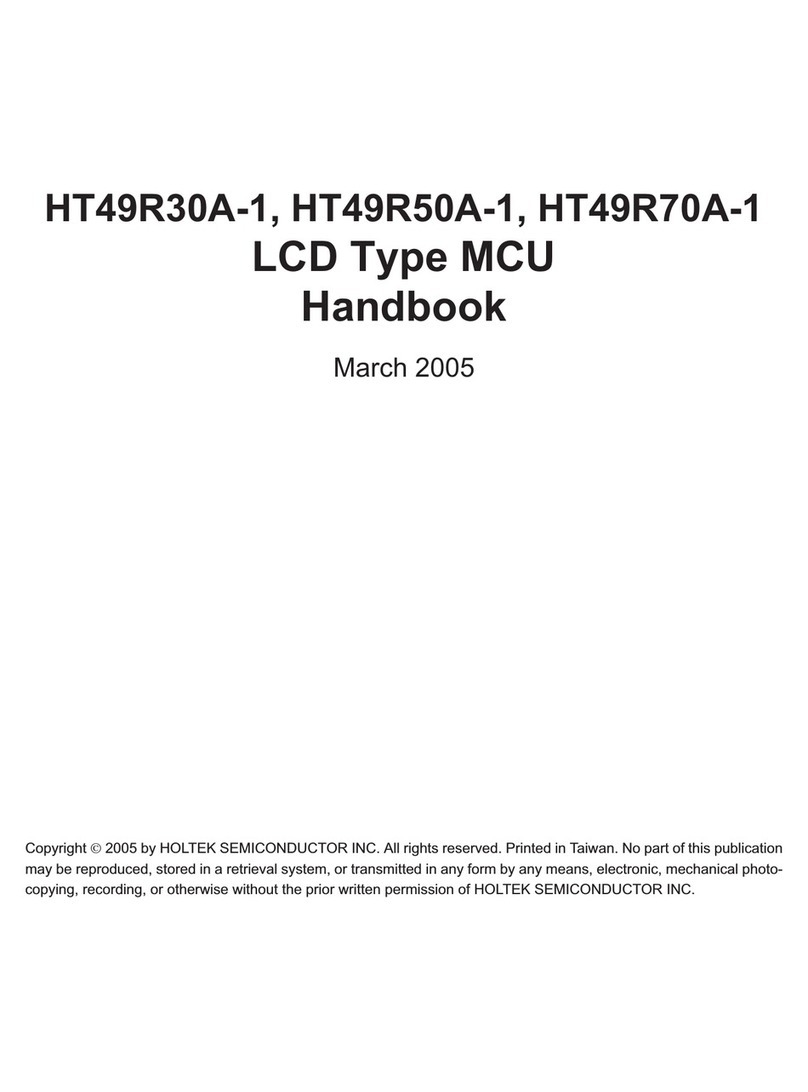
HTG2190
Rev. 1.20 10 July 5, 2002
forms a short jump. The destination must be within 256
locations.
When a control transfer takes place, an additional
dummy cycle is required.
Program memory -ROM
The program memory, which contains executable pro-
gram instructions, data and table information, is com-
posed of a 65536 x 16 bit format. However as the PC
(program counter) is comprised of only 13 bits, the re-
maining 3 ROM address bits are managed by dividing
the program memory into 8 banks, each bank having a
range between 0000H and 1FFFH. To move from the
present ROM bank to a different ROM bank, the higher 3
bits of the ROM address are set by the BP (Bank
Pointer), while the remaining 13 bits of the PC are set in
the usual way by executing the appropriate jump or call
instruction. As the full 16 address bits are latched during
the execution of a call or jump instruction, the correct
value of the BP must first be setup before a jump or call
is executed. When either a software or hardware inter-
rupt is received, note that no matter which ROM bank
the program is in the program will always jump to the ap-
propriate interrupt service address in Bank 0. The origi-
nal full 16 bit address will be stored on the stack and
restored when the relevant RET/RETI instruction is exe-
cuted, automatically returning the program to the origi-
nal ROM bank. This eliminates the need for
programmers to manage the BP when interrupts occur.
Certain locations in Bank 0 of program memory are re-
served for special usage:
·ROM Bank 0 (BP5~BP7=000B)
The ROM bank 0 ranges from 0000H to 1FFFH.
·Location 000H
This area is reserved for the initialization program. Af-
ter a chip reset, the program always begins execution
at location 000H.
·Location 004H
This area is reserved for the external interrupt or serial
input interrupt service routine. If the INT input pin is
activated, and the interrupt is enabled and the stack is
not full, the program will jump to location 004H and be-
gins execution.
·Location 008H/00CH
This area is reserved for the Timer/Event Counter 0/1 in-
terrupt service program. If a timer interrupt results from a
Timer/Event Counter 0/1 overflow, and if the interrupt is
enabled and the stack is not full, the program will jump to
location 008H/00CH and begins execution.
·Location 010H/014H
This area is reserved for the timer 2/3 interrupt service
program. If a timer interrupt resulting from a timer 2/3
overflow, and if the interrupt is enabled and the stack
is not full, the program will jump to location
010H/014H and begins execution.
·Location 018H
This area is reserved for the PWM D/A buffer empty
interrupt service program. After the system latch a D/A
code at RAM address 28H, the interrupt is enable, and
the stack is not full, the program begins execution at
location 018H.
·Location 020H
For best condition, this location is reserved as the be-
ginning when writing a program.
·ROM Bank 1~7 (BP5~BP7=001B~111)
The range of the ROM starts from n000H to
(n+1)FFFH. (n=2,4,6,8,10,12,14)
·Table location
Any location in the ROM space can be used as look up
table. The instructions TABRDC [m] (use for any
bank) and TABRDL [m] (only used for last page of pro-
gram ROM) transfers the contents of the lower-order
byte to the specified data memory, and the
higher-order byte to TBLH (08H). Only the destination
of the lower-order byte in the table is well-defined, the
0000H
0004H
0008H
D e v i c e i n i t i a l i z a t i o n p r o g r a m
E x t e r n a l o r s e r i a l i n p u t i n t e r r u p t s u b r o u t i n e
T i m e r / e v e n t c o u n t e r 0 i n t e r r u p t s u b r o u t i n e
P r o g r a m
R O M
1 6 b i t s
F F F F H
T i m e r / e v e n t c o u n t e r 1 i n t e r r u p t s u b r o u t i n e
000C H
T i m e r 2 i n t e r r u p t s u b r o u t i n e
T i m e r 3 i n t e r r u p t s u b r o u t i n e
010H
014H
D / A b u f f e r e m p t y i n t e r r u p t
018H
Program memory
Instruction Table Location
*15 *14 *13 *12 *11 *10 *9 *8 *7 *6 *5 *4 *3 *2 *1 *0
TABRDC [m] #7 #6 #5 #4 #3 #2 #1 #0 @7 @6 @5 @4 @3 @2 @1 @0
TABRDL [m] 11111111@7@6@5@4@3@2@1@0
Table location
Note: @7~@0: TBLP register bit7~bit0 *15~*0: Program ROM table address bit15~bit0
#7~#0: TBHP register bit7~bit0

